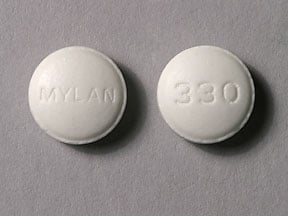
Perphenazine-amitriptyline Coupons & Savings Card – Discount Prices from $19.73
My prescription
Edit
2-10MG, Perphenazine-amitriptyline (30 Tablets)
Select pharmacy

CVS
$26.82
COUPON PRICE
Walgreens
$19.73
COUPON PRICE
Walmart
$20.85
COUPON PRICE
Albertsons
$40.07
COUPON PRICEFree Perphenazine-amitriptyline Savings Card

Walgreens
$19.73
Show this coupon to your pharmacist
ID
LHET726568
PCN
GDC
BIN
015995
GRP
GDRX
This coupon is not insurance
More prescriptions for schizophrenia
More prescriptions for schizophrenia
Perphenazine-amitriptyline dosage forms
Dosage Quantity Price from Per unit 2-10MG 30 Tablets $20.85 $0.69 2-10MG 60 Tablets $35.64 $0.59 2-10MG 90 Tablets $44.46 $0.49 2-25MG 30 Tablets $31.74 $1.06 2-25MG 60 Tablets $47.16 $0.79 2-25MG 90 Tablets $61.74 $0.69 4-10MG 30 Tablets $25.59 $0.85 4-10MG 60 Tablets $37.56 $0.63 4-10MG 90 Tablets $47.34 $0.53 4-25MG 30 Tablets $32.58 $1.09
| Dosage | Quantity | Price from | Per unit |
|---|---|---|---|
| 2-10MG | 30 Tablets | $20.85 | $0.69 |
| 2-10MG | 60 Tablets | $35.64 | $0.59 |
| 2-10MG | 90 Tablets | $44.46 | $0.49 |
| 2-25MG | 30 Tablets | $31.74 | $1.06 |
| 2-25MG | 60 Tablets | $47.16 | $0.79 |
| 2-25MG | 90 Tablets | $61.74 | $0.69 |
| 4-10MG | 30 Tablets | $25.59 | $0.85 |
| 4-10MG | 60 Tablets | $37.56 | $0.63 |
| 4-10MG | 90 Tablets | $47.34 | $0.53 |
| 4-25MG | 30 Tablets | $32.58 | $1.09 |
| 4-25MG | 60 Tablets | $47.16 | $0.79 |
| 4-25MG | 90 Tablets | $61.74 | $0.69 |
| 4-50MG | 30 Tablets | $32.58 | $1.09 |
| 4-50MG | 60 Tablets | $47.16 | $0.79 |
| 4-50MG | 90 Tablets | $61.74 | $0.69 |
Perphenazine-amitriptyline Warnings
Antidepressants, such as perphenazine/amitriptyline, are commonly prescribed for treating depression and other mental health disorders. While these medications offer significant benefits, they also pose certain risks. Below are important safety warnings and precautions to consider:
- Increased Risk for Younger Users: Individuals under 25 years old may experience worsening depression, increased suicidal thoughts, or unusual behavioral changes, particularly when starting treatment or adjusting the dose.
- Risks for Older Adults with Dementia: Older adults, particularly those over 65 with dementia-related psychosis, are at a higher risk of serious side effects and increased mortality when using these medications.
- Bipolar Disorder Precaution: Antidepressants should not be used alone in individuals with bipolar disorder, as they may trigger manic episodes.
- Movement Disorders: Long-term or high-dose use can lead to movement problems such as involuntary twitching, more common in older females.
- Neuroleptic Malignant Syndrome (NMS): This rare but serious condition requires immediate medical attention if symptoms like high fever, muscle stiffness, or confusion occur.
- Fall Risk: The medication may cause drowsiness and low blood pressure, increasing the risk of falls, especially in older adults.
- Blood Cell Count Issues: There is a potential for reduced white blood cell counts, increasing infection risk, particularly in those with pre-existing conditions.
- Cardiovascular Concerns: High doses may lead to heart rhythm problems, stroke, or heart attack.
- Seizure Risk: Those with a history of seizures should consult their doctor, as the medication may elevate seizure risk.
- Glaucoma: The medication can worsen angle-closure glaucoma, so any vision changes should be reported.
Contraindications:
- Avoid use if experiencing slowed brain activity due to sedatives or similar substances.
- Not recommended for individuals with recent heart attacks, low blood cell counts, or those who have recently used MAOIs.
In case of overdose or severe side effects, seek emergency medical assistance immediately. Always discuss the risks and benefits of this medication with your healthcare provider to determine the most appropriate treatment plan.
Perphenazine-amitriptyline Side Effects
Common side effects:
- drowsiness
- dizziness
- dry mouth
- blurred vision
- constipation
- tiredness
Less common but important to monitor:
- headaches
- nausea
- vomiting
- sweating
- itching
- skin rash
- changes in weight
- restlessness
- tremors
- uncontrolled body movements
- unwanted breast milk production
- menstrual changes
- decreased sexual ability
Serious side effects:
- muscle stiffness
- severe confusion
- rapid heartbeat
- dark urine
- signs of a stroke
- chest pain
- irregular heartbeat
- tardive dyskinesia
- neuroleptic malignant syndrome
- serious allergic reaction
Perphenazine-amitriptyline Interactions
Perphenazine/amitriptyline can interact with numerous medications and supplements, so it is crucial to inform your doctor and pharmacist about everything you are taking, including prescription and over-the-counter drugs, vitamins, and herbal products.
Certain medications should not be combined with perphenazine/amitriptyline due to potential severe interactions. These include MAO inhibitors such as isocarboxazid, linezolid, methylene blue, moclobemide, phenelzine, procarbazine, Rasagiline, safinamide, Selegiline, and Tranylcypromine. Avoid using MAO inhibitors during treatment and for two weeks before and after taking perphenazine/amitriptyline to prevent serious, possibly fatal reactions.
Other drugs that may affect the effectiveness or safety of perphenazine/amitriptyline include medications for irregular heartbeats (like Amiodarone and quinidine), macrolide antibiotics (such as Erythromycin), azole antifungals (such as Ketoconazole), and certain antidepressants like SSRIs (Fluoxetine, paroxetine). Additionally, Cimetidine, rifamycins, and some anti-HIV drugs may also interfere with the way perphenazine/amitriptyline is processed in your body.
Medications that cause drowsiness, such as opioid pain relievers (codeine, Hydrocodone), alcohol, marijuana, sleep aids (Alprazolam, Lorazepam, Zolpidem), and antihistamines (Cetirizine, diphenhydramine), should be used cautiously as they may increase drowsiness when taken with perphenazine/amitriptyline.
Aspirin, when used with perphenazine/amitriptyline, can elevate bleeding risk. However, if your doctor has recommended low-dose aspirin for heart attack or stroke prevention, continue its use unless advised otherwise.
Lastly, avoid using Nortriptyline while taking amitriptyline, as they are very similar. Always consult your healthcare provider for specific guidance regarding your medication regimen.
